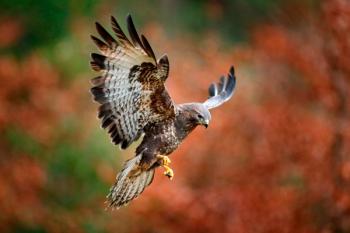
Aesop's Fable Experiments Shed Light on How Birds Learn
In Aesop’s fable “The Crow and the Pitcher,” a thirsty crow drops stones into a pitcher to raise the water level high enough to reach. But will real birds do the same, and can they understand why it happens?
According to a review published in the January 2017 issue of Animal Behaviour, birds learn by trial and error, but research to date does not prove that they understand cause and effect.
A number of published studies have tested birds’ causal understanding by having them drop objects into water-filled tubes to obtain a food reward (or by performing variations of this task). The authors refer to these studies as Aesop experiments. Five bird species have so far successfully completed an Aesop task: rooks (Corvus frugilegus), New Caledonian crows (Corvus moneduloides), Eurasian jays (Garrulus glandarius), great-tailed grackles (Quiscalus mexicanus), and California scrub jays (Aphelocoma californica).
The question, say the authors of the current article, is whether these experiments show that birds truly understand cause and effect. That is, given a choice between two alternatives, do birds choose the functional option (the one that yields a reward) because they understand how water displacement works? Or have they learned through repeated attempts that they can raise the water level by dropping objects into it?
The authors suggest that Aesop experiments ideally should be able to differentiate between causal understanding and trial-and-error learning. Given two alternatives, one of which is functional, birds that understand water displacement should choose the functional option very early on, perhaps even at the first trial. Birds learning through trial and error should take longer to choose the functional option.
In actual experiments, however, this distinction is not so straightforward. “The interpretative challenge in Aesop experiments is well recognized in the literature: an initial functional preference does not, by itself, prove causal understanding,” write the authors. Birds that have undergone prior training for research studies, for example, could be applying previously learned responses to the Aesop test.
The authors analyzed the results of published Aesop experiments with regard to the specifics of each test and the prior training of the birds. The experiments used many variations of the basic Aesop test. In some studies, birds were presented with a choice related to the object (large or small, heavy or light, solid or hollow, and so forth). In others, the choice was related to the tube (for example, high or low water level, narrow or wide tube, water- or sand-filled tube). The authors pooled individual trial results to make group-level conclusions; they also examined individual variability among the birds.
In 11 of 33 experiments, the results seemed to indicate that birds had causal understanding at the group level. However, in each case the authors found that trial-and-error learning could also explain the findings; therefore, causal understanding could not be proved. Similarly, analysis of individual variability could not prove that the birds that performed best actually understood cause and effect better than the other birds.
The authors suggest modifications to Aesop tests that may clarify whether birds truly have causal understanding. For example, independently testing the types of objects birds like to handle could show whether a predisposition toward certain objects affects a bird’s performance on an Aesop test.
“The evidence that birds understand cause—effect relationships in Aesop tasks appears scarce,” write the authors. “We conclude that associative learning alone, without explicit causal understanding, explains adequately the behaviour of birds in Aesop experiments conducted so far.”
Dr. Laurie Anne Walden received her doctorate in veterinary medicine from North Carolina State University. After an internship in small animal medicine and surgery at Auburn University, she returned to North Carolina, where she has been in small animal primary care practice for over 20 years. Dr. Walden is also a board-certified editor in the life sciences and owner of Walden Medical Writing, LLC. She works as a full-time freelance medical writer and editor and continues to see patients a few days each month.
Newsletter
From exam room tips to practice management insights, get trusted veterinary news delivered straight to your inbox—subscribe to dvm360.




